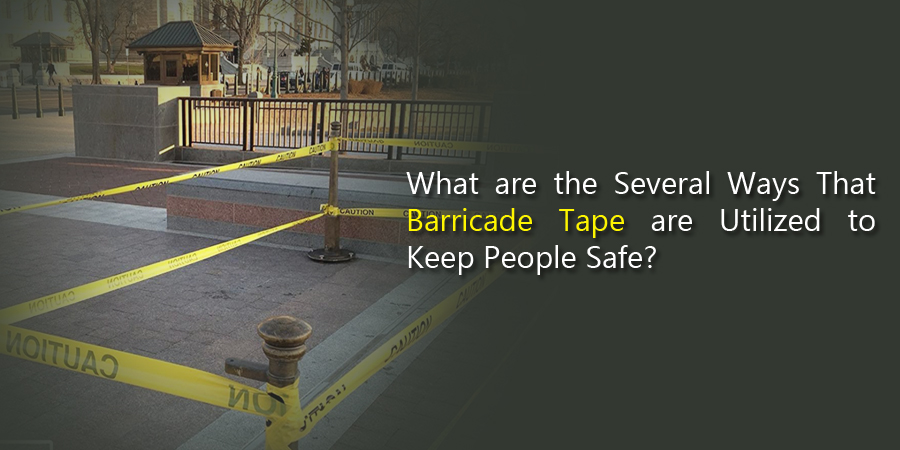You’ve probably seen building sites where laborers use red and white or black and yellow stripes. Did you understand what all these are and why they’re utilized? Safety Barricade tape will be discussed in this section. How is the shade selected, how many different varieties of barricades are there, and how will it benefit us? Singhal Industries Private Limited is a company that assures quality products and reliable service.
Why do we Require Safety Barricade Tape?
A barricade is required because it avoids hazardous circumstances by preventing equipment and people from entering trenches, opening maintenance hole covers, and floor gaps—restriction of personnel or equipment to a reliable means of entry to the site.
How can we create a functional and standard-compliant barricade?
Barricades are Classified into Two Categories
- Soft Barricade
- Hard Barricade
You’ve probably seen movies where the cops use plastic tape to cover up a mishap or destruction. Soft Barricade and hard Barricade are those in which strong concrete walls, tubes, or metal are utilized in these shades chosen by OSHA due to their appearance ( short wavelength)
- The color red represents the threat.
- The color yellow is used to indicate caution.
What about Barricades? And why is it Significant?
The placement and management of barricades work to safeguard workers by restricting or limiting entry to dangerous or threatening worksites. General barricades must be built to protect people from encountering danger accidentally. Examples of when barricades should be created include when there is a risk of falling or being struck by falling objects, when there is a chance of harm from machinery or processes, and when switchboards and power line tests are being repaired. Work involving a barricade shall not begin till the criteria of this protocol have been met. Barricades must be removed once the task is done or the danger has been mitigated.
Barricade Security
When safety barricade tape is used to limit access to a place, the essential guidelines must be followed at all times:
When used to defend against a potential hazard or an exposed edge (less than 2m high), the Barricade must be erected at least 2 meters from the side. The Barricade must be maintained in good shape to stay useful as a control device. The inspector and labor party are in charge of keeping an eye on the state of the Barricade.
Barricading Varieties
Barricades are divided into soft barricades and hard (solid) barricades. Soft barricades employ permitted tape to block or limit entry to a certain area. A hard barrier is a structural construction that restricts or limits entry to a certain region, such as steel tubes or liquid devices.
Appropriate Signage
Signage must be installed on all barricades. The table below shows what signage is acceptable for every Barricade. The signage must include the following information: the signature of the person in responsibility, the danger, the date, and the contact information for the man in charge of the region, if applicable.
Barricades are Being Removed
Tapes and barricades must be withdrawn after no longer necessary (i.e., danger controlled/work done, etc.).
Note: If the work party associated with the Barricade is not available on-site during standard business hours, the shift supervisor can approve entry into a barricaded zone after evaluating and ensuring it is safe to proceed.
When is it OK to use Safety Barrier Tape in the Workplace?
Caution tape should be utilized in IDLH (immediately dangerous to life and health) circumstances with a known danger or a highly unsafe scenario that demands an instant barrier. Its aim is to mark the perimeter for employees, rescuers, and the public. It also controls and prevents entry to emergencies and aid in pedestrian traffic flow conditions. They are also widely employed for crowd management or to indicate places on company assets where the public is not allowed entry.
Conclusion
Safety Barricade tape is developed specifically to increase the security and well of others, and they are essential for sealing off and alerting against potentially hazardous places. If your employment entails dangerous aspects, appropriately warn off dangerous locations to safeguard everyone’s security and avoid catastrophic workplace accidents.









